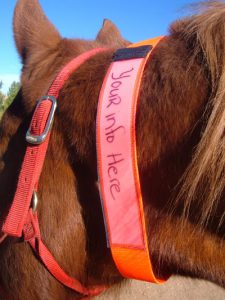With hurricane season here and in full cyclone, the likelihood of having to evacuate is pressing. Evacuating horses is not a simple task. Horses are large, high-value, flight animals that are subjective to dangerous behaviors and injuries when undergoing stress. With good training in place some horses have increased resiliency in emergency situations… but all horses can be at risk if proper preparation is not first made by owners.
Evacuating Equines
Vaccinations and Tests should always be kept up to date.
- Tetanus toxoid (boost yearly): Debris and injury increase likelihood horses may encounter Tetanus.
- West Nile & Eastern/Western Encephalitis: Increase in mosquito populations post storms, recommended booster 4-6 months prior to hurricane season and if not booster immediately.
- A negative Coggins test and/or health certificate is necessary to be housed in community operated shelters, private residence shelters, and to travel across state lines. Occasionally in emergency situations, the state Veterinarian can issue an advisory notice/waiver. This allows livestock to cross state lines without proper certificates, but many restrictions may also accompany these waivers. This may not always be the case so keeping proper documents and tests up to date are the ultimate minimum. If there is confusion or any questions, contact your local UF IFAS Agricultural Extension agent for further assistance.
- Owner/Farm Name
- Contact Phone Number
- Secondary Phone Number
- Serious Health Concerns such as Cushings, HYPP, + Coggins Test, ect.
- Use lipstick to write phone numbers on haunches
- Use sharpie to write phone numbers on hooves
- Shave phone numbers into the coat
Horses can also have authorized brands, tattoos, and freeze marks to aid in identification. There is also the option to microchip each horse, which is strongly suggested**. Many local veterinarians have the ability to perform microchipping. Keep your animal’s number on key documents and a spare in your wallet.


**If your animal (not just horses!) are microchipped, please remember to check and update your contact information often. Microchips must be manually updated through the company's system and does not serve as a tracking device.**
Know your route and tell your neighbors/friends! Leave 72 hours prior to the storm.
Sheltering
Finding a location to evacuate to is primarily organized through word of mouth and often social media. Many of these private shelters will be an at-your-own-risk opportunity so be thorough of your choice. If you need or would like direct contact with possible sheltering locations, you can call your local Extension Agent. There is also a third party document with some contacts available here. Always call your prospective shelter ahead of time to let them aware of your estimated time of arrival and know their updated capacity limitations.
Pack your trailer with all necessary items to maintain your animal. Shelters often do not have enough supplies for every animal during emergencies. Pack buckets for feed and water, hay nets and hay(enough for at least 3 days), copies of necessary documents, any medications your horse may need, a clean garbage can filled with potable water, first aid kit, several halters and lead ropes, muck fork, fly spray and grooming supplies, towel/sponge and a dedicated wound washing/bath bucket.
Try to keep your horse calm and dry the best you can. Stress and poor hygiene increases susceptibility to disease. If your horse is showing signs of sickness prior to evacuation, make sure you alert your shelter prior to arrival and understand quarantine protocols to keep other horses safe. Never share water or feed between strange horses; avoid sharing equipment if possible. Keep horses in individual stalls or paddocks if possible, and if not only share space with herd mates. Avoid sharing pastures with strange horses.
Each sheltering location has it’s own set of rules, however most facilities will require you to maintain your own animal. Not every sheltering location will have facilities for human capacity, so prepare yourself with a location as well. Common courtesy is to not interact with other people’s animals, even if permission is given. Emergency situations will undoubtedly be stressing the animal, so even if the horse appears fine limiting strange people’s interactions will ease the animal. For your own animal, judge your horse’s needs individually. Some horses benefit from interaction such as grooming and petting from owners while others may feel more stress from it. Be patient and understanding with your horse.
Plan to deworm your horse following your evacuation, and watch closely for 7-14 days for developing sickness.
Staying Behind
If you choose to not evacuate, which is highly un-encouraged, do not leave halters on your horse and do not confine horses inside poorly constructed barns. Make sure you still have properly identified your animal(s) and have enough food/water for a minimum of 3 days. Ensure hay and feed remain dry at all times. If your pasture has good fencing and limited trees it is likely best to leave the horse outside. Check your pasture for dangers and debris prior to the storm. Leave barns open access and never place horses in pastures with overhead power lines. Barbed wire fencing is not considered good fencing during emergencies, therefore never place horses in these pastures.
Keep an emergency barn kit with a chain saw and fuel, hammer, saw, nails, screws and fencing materials. Place this kit in a secure and easily accessible location. Remove as much unnecessary items from the barn to reduce flying-debris risk. Move hay and feed off the floor to reduce water damage.
Conclusions
Evacuation can be scary, but with proper preparation and diligence the event can go smoothly. Keep these guidelines in mind, and when in doubt never be afraid to call your local veterinarian and UF IFAS Extension Agent for help and advice.
Stay safe.
 0
0


